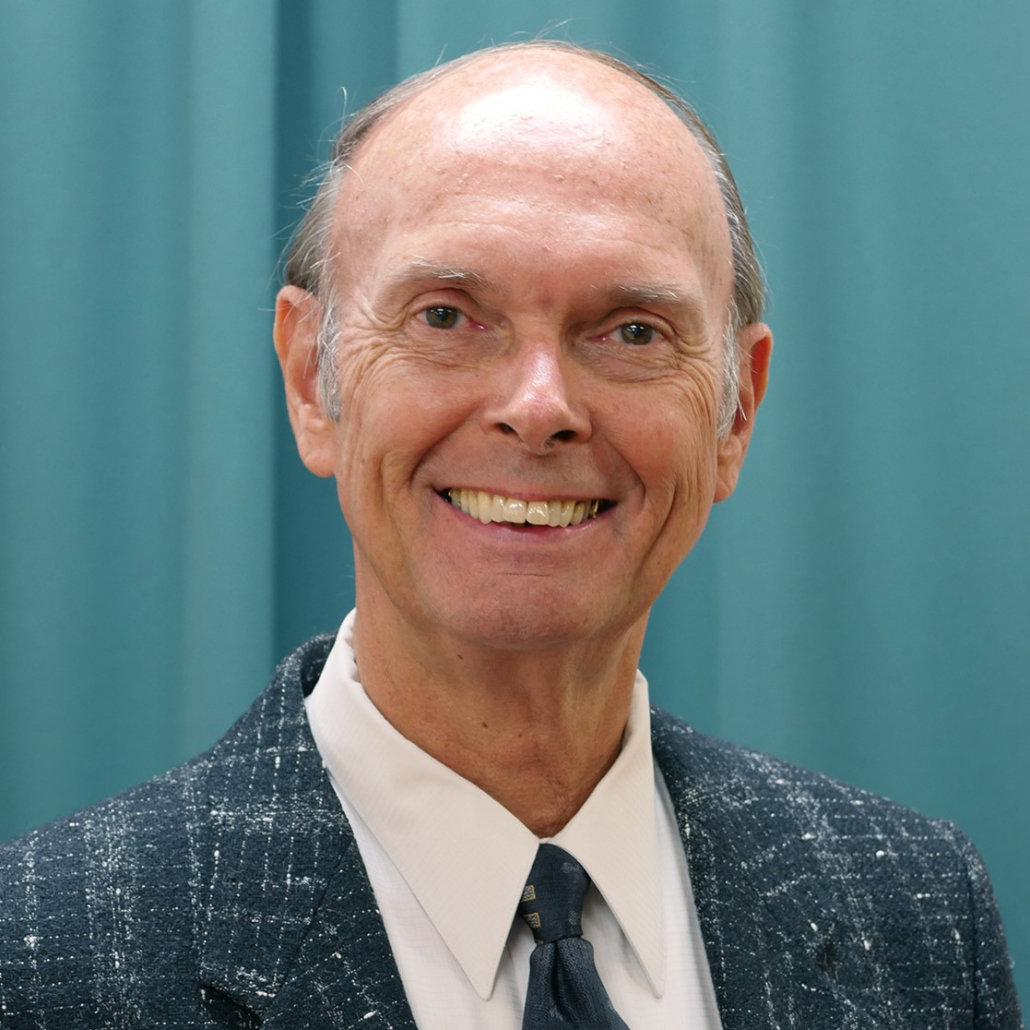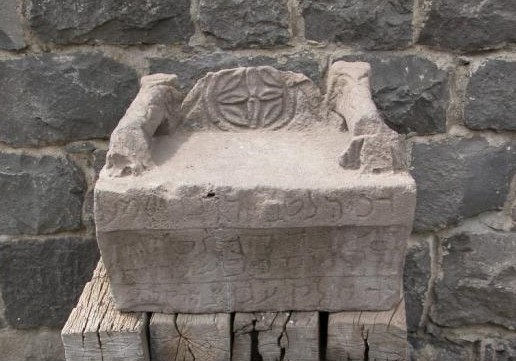Digging Deeper: What was Moses’ Seat?
Author: Mr. Kenneth Frank | Faculty in Theology, Living Education
Estimated Reading time: 7 min.
Did you know that Moses was honored with a seat in New Testament Jewish synagogues?
Centuries after Moses died, the seat of Moses was an honored chair in these meeting houses. In the first century, there is evidence from some synagogues of a special decorative seat called the “Seat of Moses” on a raised platform. His seat was filled by men who claimed the exalted position of teaching by Moses’ authority. Jesus referred to this religious office with some sharp statements about the religious leaders who occupied it. Today’s Digging Deeper explores the history behind this exalted position with Jesus’ important caveat.
Our central passage for this study is: “Then spake Jesus to the multitude, and to his disciples, Saying, The scribes and the Pharisees sit in Moses’ seat: All therefore whatsoever they bid you observe, that observe and do; but do not ye after their works: for they say, and do not” (Matthew 23:1-3 KJV). In this same chapter, Jesus pronounced seven woes upon these men for their abuse of power (Matthew 23:13-36).
The authority of Moses
Moses was the great legislator of the Israelite nation. God inspired him to preach and to inscribe five books (the Torah or Pentateuch) in God’s name. His influence transcended the centuries, for he is named 80 times in our New Testament, having a massive presence among the devout of the land. Moses occupied the office of expounder and chief justice for the application of the law to specific cases of conduct. Exodus 18 describes how his father-in-law convinced him to delegate authority to other judges under his command, thereby sharing his authority but leaving him as the chief justice with God’s final authority. Upon his death, Moses’ authority passed on to his successors who sat in his seat.
The Expository Notes of Dr. Constable explains what sitting in Moses’ seat represented: “According to Old Testament figurative usage a person who sat on a predecessor’s seat was that person’s successor (Exodus 11:5; 12:29; 1 Kings 1:35; 1:46; 2:12; 16:11; 2 Kings 15:12; Psalm 132:12)” (e-Sword 12.2). Adam Clarke’s Commentary on the Bible explains why God permitted them to do so: “They sat there formerly by Divine appointment: they sit there now by Divine permission” (Ibid.). They were not authorized to mandate new law but rather to interpret already provided law for their followers.
The College Press Bible Study Textbook Series describes how his position was transferred upon his death: “Moses’ seat is his cathedra, his ‘Bible Chair’ from which his doctrine is read and expounded. In Malachi’s day it was the priests who had the magisterial responsibility (Malachi 2:7 ff.), a duty as old as the priesthood itself (Leviticus 10:17; Deuteronomy 17:9-13). But with ‘Ezra the priest and scribe’ (Nehemiah 12:26) the function began shifting onto professional scribes (Nehemiah 8:4, 7-9; 8:13, 18; cf. Ezra 7:1-6; 10)” (e-Sword 12.2).
The Transfer of Influence
In the first century, the Levites were to have been Israel’s teachers, but most of them were Sadducees and no longer carried the same authority. Moses’ authority had devolved to the scribes and Pharisees. Study of the Scriptures was of little interest to the indifferent Sadducees. The Pulpit Commentary, edited by H.D.M. Spence and Joseph S. Exell, explains: “The Sadducees seem to have had no popular influence, and were never recognized as leaders. The Levitical priests never appear in the Gospels as teachers or expositors of the Mosaic system; this function of theirs had devolved upon scribes and lawyers” (e-Sword 12.2).
By Jesus’ day, scribes (doctors of the law or legal experts) were mostly from the Pharisaic party instead of the Sadducean, but not all Pharisees were scribes. Dr. Bob Utley’s You Can Understand the Bible describes the scribes as “…experts in the Written Law (OT) and the Oral Law (Talmud) of Israel and were available to make local practical applications. In effect they replaced the traditional OT functions of the local Levites” (e-Sword 12.2). A Commentary on the Holy Bible, edited by J.R. Dummelow explains their claim to authority: “The scribes (who were ordained with the laying-on of hands) claimed to have received their authority through an unbroken succession from Moses. The ‘sitting’ refers to the judicial power, and the authority to teach, which all scribes or rabbis possessed, and which was centred in the Great Sanhedrin [Jewish supreme court]” (Ibid.).
Sitting to Teach
Moses’ writings were read incrementally in the synagogues every Sabbath day (Acts 15:21). When the Law of Moses (Genesis-Deuteronomy) and the Prophets were read from the scrolls stored in “the Ark” (cabinet) in synagogues, the reader stood; however, when he expounded the reading afterward he sat. Sitting was the posture of a teacher. Jesus employed this position to teach as well: “And seeing the multitudes, he went up into a mountain: and when he was set, his disciples came unto him” (Matthew 5:1 KJV). The Cambridge Bible for Schools and Colleges notes that “In the Talmud ‘to sit’ is nearly synonymous with ‘to teach'” (e-Sword 12.2).
When Jesus said the scribes and the Pharisees sit on Moses’ seat, He merely acknowledged the fact. The Cambridge Bible for Schools and Colleges explains His remark about these leaders: “Where they went wrong Jesus will point out. But here He must mention them, because, despite their faults, they uphold Moses, as opposed to the paganizing leadership of the Sadducean priesthood” (e-Sword 12.2).
However, Jesus did criticize their hypocrisy (Matthew 23:3-7). The College Press Bible Study Textbook Series clarifies that Jesus’ criticism of these religious leaders was not for their holding such an authoritative position but “…because their party zeal strenuously applied the theologians’ legalistic conclusions to everyday life with a rigor that required everyone to fall in lock-step behind them. In this sense, the Pharisees, too, were Israel’s teachers, even if unofficially” (e-Sword 12.2).
To do what they say
In Matthew 23:3 Jesus does not dispute the importance of Moses’ law, but His implication is clear. He goes on to explain that these teachers did not obey their teachings (Matthew 23:4). As The College Press Bible Study Textbook Series continues ” … whatever comes from Moses is from God and is to be received with full confidence and submission. Merely because Jesus must undercut the unjustified pretensions of the Jewish magisterium does not mean that Moses must go too. So, before beginning His condemnation of the unfaithfulness and sinful conduct of the religious leaders, He calls for sincere reverence for God’s Law” (e-Sword 12.2).
Matthew Henry’s Commentary on the Whole Bible provides us two important lessons from this passage:
“1. Many a good place is filled with bad men; it is no new thing for the vilest men to be exalted even to Moses’s seat (Psalm 12:8); and, when it is so, the men are not so much honoured by the seat as the seat is dishonoured by the men. Now they that sat in Moses’s seat were so wretchedly degenerated, that it was time for the great Prophet to arise, like unto Moses, to erect another seat.
2. Good and useful offices and powers are not therefore to be condemned and abolished, because they fall sometimes into the hands of bad men, who abuse them. We must not therefore pull down Moses’s seat, because scribes and Pharisees have got possession of it; rather than so, let both grow together until the harvest, Matthew 13:30″ (e-Sword 12.2).
Respect for high office, especially religious office, is a fundamental teaching of church government. Jesus set the record straight at a time when there was much abuse of this position by the religious teachers. This was not meant to condone their unbiblical behavior but rather to instruct their followers to abide by their correct teachings of God’s word, despite their hypocrisy. God’s mighty word will still change lives, even if delivered by defective servants.

Kenneth Frank was born and raised in New Jersey, USA, and attended Ambassador College, graduating in 1973. He served in the Canadian ministry from 1973-1999, after which he returned to the USA to pastor churches in Maryland, Virginia, and North Carolina for 15 years. Having earned a BA degree from Ambassador College he later earned a MA degree from Grand Canyon University before being assigned to the Charlotte office to teach at Living University, now Living Education. Currently, he teaches the Survey of the Bible course to the on-campus students and writes the Digging Deeper column for our online Bible study program. He is married, has four children, and seven grandchildren.









